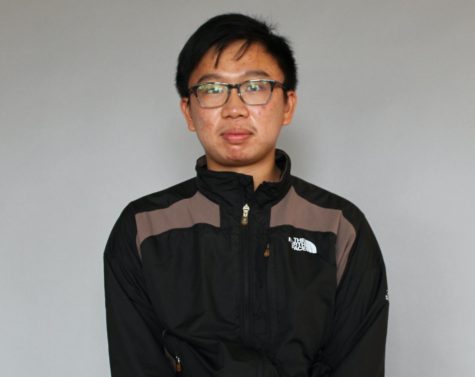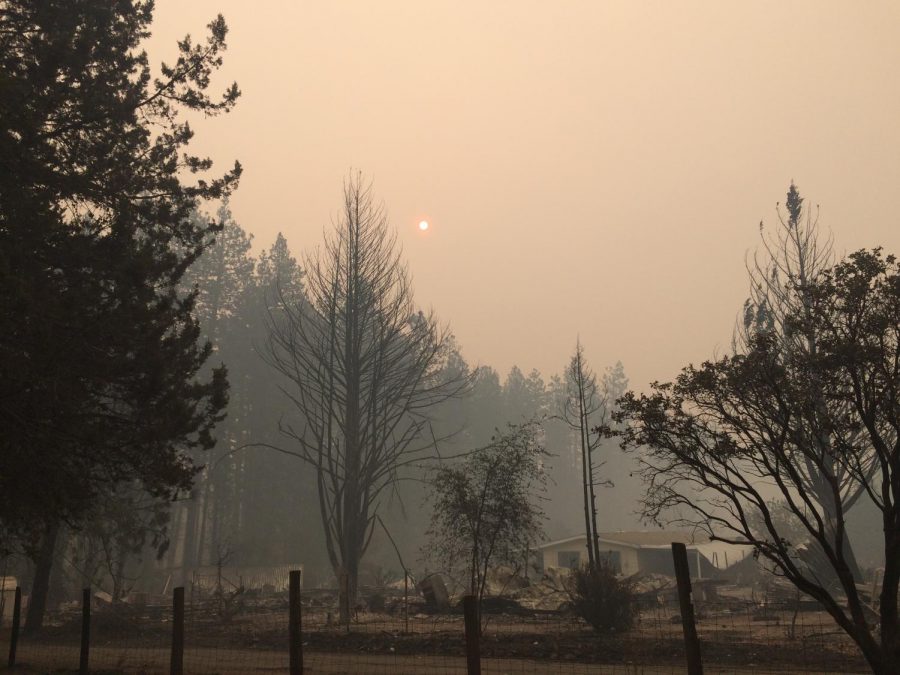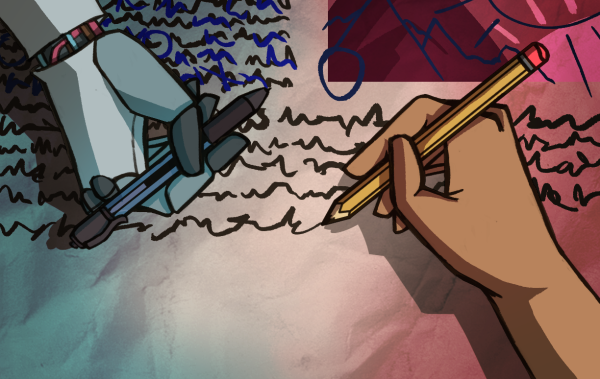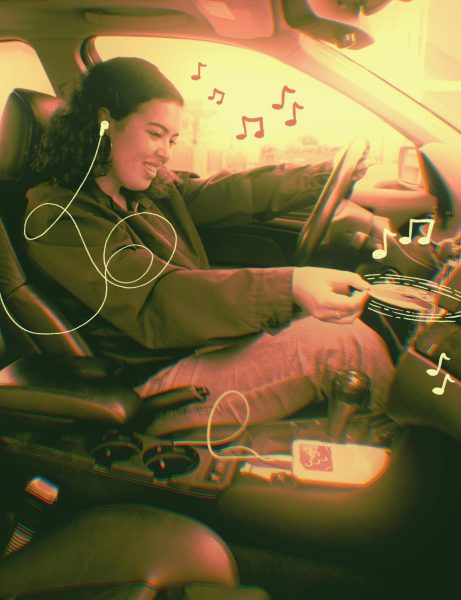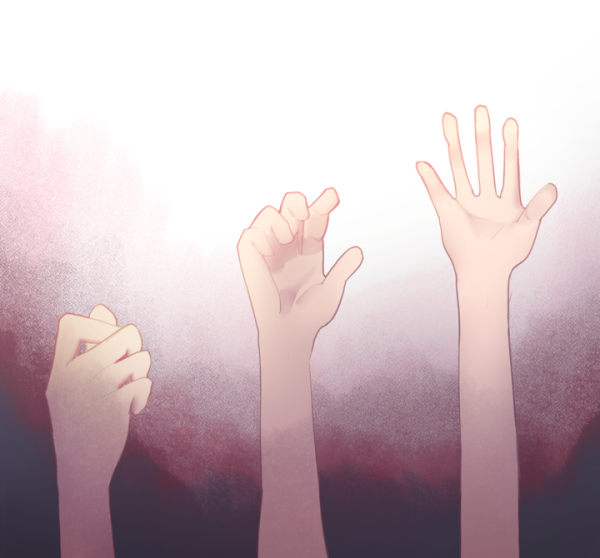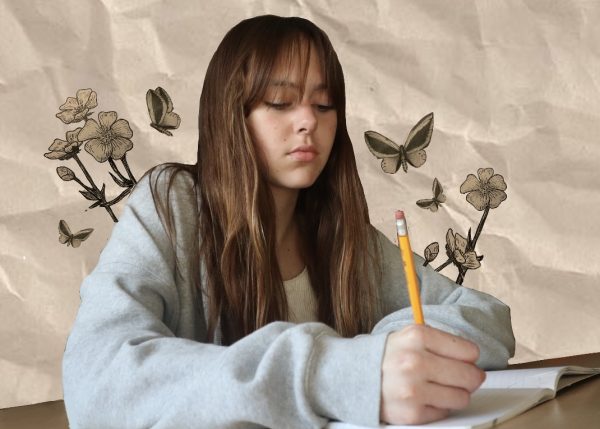Skipping the Smoke: SFUSD should cancel school on unhealthy air days
Olivia Sohn Image of smoke from the 2018 Camp Fire in Paradise, California taken by class of 2018 Lowell alumna Olivia Sohn, who volunteered for Marin County Search and Rescue. Smoke from this fire made its way to Lowell’s campus in 2018.
It seemed like a normal school day until a mass of students filed into Lowell’s main building wearing white disposable face masks. The scene was nearly dystopian, as students shielded their faces from the smoke that had traveled hundreds of miles from the Camp Fire in Butte County to Lowell, coughing and complaining about the unhealthy air quality on their way to class.
With wildfires growing increasingly frequent and destructive each year, San Francisco Unified School District (SFUSD) should not continue to subject students to these conditions. Students should not have to attend school when the air quality is detrimental to their health. Because canceling school presents an unequal burden across families, time and resources should be allocated to help those families most in need of assistance to prepare for forecasted bad air days.
Poor air quality poses a very serious threat to personal health. Students and teachers are usually informed about San Francisco’s air quality through the website AirNow, which reports daily “air quality index” counts that measure how healthy the air is. AQI rises with the air’s percentage of particulate matter, which is defined by the EPA as a mixture of solid particles and liquid droplets found in the air. This can include both visible (viewed by students as haze and smoke) and undetectably small matter that, when inhaled, can irritate and damage the lungs. Finer particles can easily be inhaled deeply into the lungs, allowing them to remain embedded for a long time or gain passage into the bloodstream. Possible long-term effects of inhaling breathing air with high particulate counts regularly includes heart problems and lung diseases. For several days before Lowell cancelled school due to the Camp Fire in November of 2018, Lowell students breathed in air from AQIs in the high 100s to low 200s, competing with New Delhi and Beijing for the worst air quality in the world. Lowell currently does not have a high efficiency particulate arrestance (HEPA) air filtration system, which removes 99.97 percent of particulates from the air, so students who are in need of healthy conditions on bad air days should be given the option of well-filtered public facilities such as libraries and the nearby Stonestown Galleria In SFUSD, the health of about 60,000 students and 10,000 staff members is put at risk during unhealthy air days. Students should not be forced to place their future health on the line: Lowell should cancel school on bad air days.
The time to act with new SFUSD air policies is now, as wildfires are only becoming more frequent. This past fire season saw the destruction of over 259.5 square miles of California, polluting San Francisco’s air with smoke. The recent Kincade Fire in Sonoma County is an example of this, with it burning over 77,000 acres from October 23rd to November 6th of 2019. Some of the most destructive fires in state history have happened within the past couple years, including the Camp Fire and 2017’s Tubbs fire also in Sonoma County. Wildfires are growing longer and less predictable due to multiple factors, including climate change, drier conditions and increasing populations in high-risk fire areas. While PG&E enforced mass power shutdowns in late 2019 to prevent transmission lines from starting fires, it only takes one missed power line or malfunction to spark another blaze. We need more effective policy to prepare for fire seasons still ahead.
Because canceling school presents an unequal burden across families, time and resources should be allocated to help those families most in need of assistance to prepare for forecasted bad air days. With modern technology allowing for air quality predictions, school can be canceled ahead of time, allowing for arrangements to be made in advance. The district website currently monitors air quality forecasts, which can help determine how many days of school will be canceled. With these resources at hand, student’s won’t have to put their health on the line, like their peers on the East Coast during snow days. Even if these resources cannot be accessed, school should still be canceled because other states commonly have inclement weather days and don’t hesitate to cancel school. If a snow day is forecasted to occur, school districts such as Philadelphia’s usually notify families of whether or not school will be canceled as early as possible. If other cities are using their resources to plan ahead to protect students, then SFUSD should do the same.
Wildfires aren’t a matter of if and when, but a matter of preparedness. As they worsen, SFUSD needs to do more to protect students and staff. This time around, the district should immediately cancel school when a fire’s effects reach San Francisco campuses, not a week later. The sight of masses of students arriving to school in face masks to protect themselves from the air shouldn’t have to be witnessed repeatedly on an annual basis.

